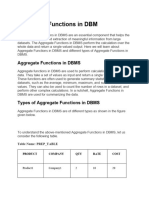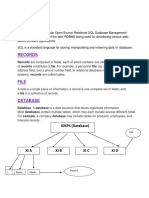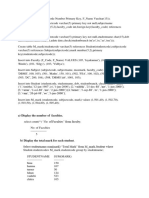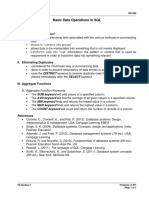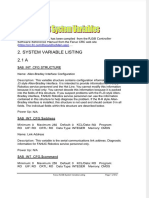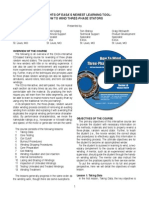0% found this document useful (0 votes)
13 views9 pagesAggregate Functions
The document provides an overview of aggregate functions in DBMS, including Min, Max, Sum, Count, and Avg. Each function is explained with its purpose, syntax, and an example query. Additionally, it includes a sample dataset and SQL query results demonstrating the use of these aggregate functions.
Uploaded by
kalyanramkalyanram321Copyright
© © All Rights Reserved
We take content rights seriously. If you suspect this is your content, claim it here.
Available Formats
Download as PPTX, PDF, TXT or read online on Scribd
0% found this document useful (0 votes)
13 views9 pagesAggregate Functions
The document provides an overview of aggregate functions in DBMS, including Min, Max, Sum, Count, and Avg. Each function is explained with its purpose, syntax, and an example query. Additionally, it includes a sample dataset and SQL query results demonstrating the use of these aggregate functions.
Uploaded by
kalyanramkalyanram321Copyright
© © All Rights Reserved
We take content rights seriously. If you suspect this is your content, claim it here.
Available Formats
Download as PPTX, PDF, TXT or read online on Scribd
/ 9










































